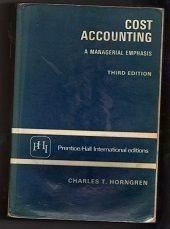My Accountinglab Fundamental Assignment Material CHAPTER 13 13-Al Accounting for Overhead; Budgeted Rates Kevin Aeronautics Company uses a budgeted overhead rate in applying overhead to products on a machine-hour basis for department A and on a direct labor hour basis for department B. At the beginning of 20x0, the company's management made the following budget predictions: Department A Department B Direct-labor cost $1.540,000 $1,230,000 Factory overhead $1.936.000 $1.020,600 Direct-labor hours 88.000 126,000 Machine hours 352,000 18,000 555 880 CHAPTER 13 . ACCOUNTING FOR OVERHEAD COSTS Cost records of recent months show the following accumulations for product M89: Department A Department B Material placed in production $12.500 $19,529 Direct labor cost $10,600 $ 9,600 Direct-labor hour 1.260 Machine hours 3,520 130 1. What is the budgeted overhead rate that should be applied in department A? In department B? 2. What is the total overhead cost of product M89? 3. If 105 units of product M89 are produced, what is its unit cost? 4. At the end of 20x0, actual results for the year's operations were as follows: Department A Department B Actual overhead costs incurred 51,390.000 $1,230,000 Actual direct-labor hours 83,000 117.000 Actual machine hours 304,000 22.000 Find the underapplied or overapplied overhead for each department and for the factory as a whole. 20x0 13-58 Absorption and Variable Costing The Twin Lakes Company had the following actual data for 20X0 and 20X1: 20x1 Units of finished goods Opening inventory 3,600 Production 17.200 13,600 Sales 13.600 15,600 Ending inventory 3,600 1,600 CHAPTER 13 566 PART 4. PRODUCT COSTING The basic production data at standard unit costs for the 2 years were as follows: Direct materials $16 Direct labor 20 Variable factory overhead Standard variable costs per unit Fixed factory overhead was budgeted at $146,000 per year. The expected volume of production was 14,600 units so the fixed overhead rate was $146,000 -14,600 = $10 per unit. Budgeted sales price was $79 per unit. Selling and administrative expenses were budgeted at variable, SII per unit sold, and fixed, 583,000 per year. Assume that there were absolutely no variances from any standard variable costs or budgeted selling prices or budgeted fixed costs in 20x0. There were no beginning or ending inventories of work in process. 1. For 20x0, prepare income statements based on standard variable (direct) costing and standard absorption costing. (The next problem deals with 20X1.) 2. Explain why operating income differs between variable costing and absorption costing. Be specific








